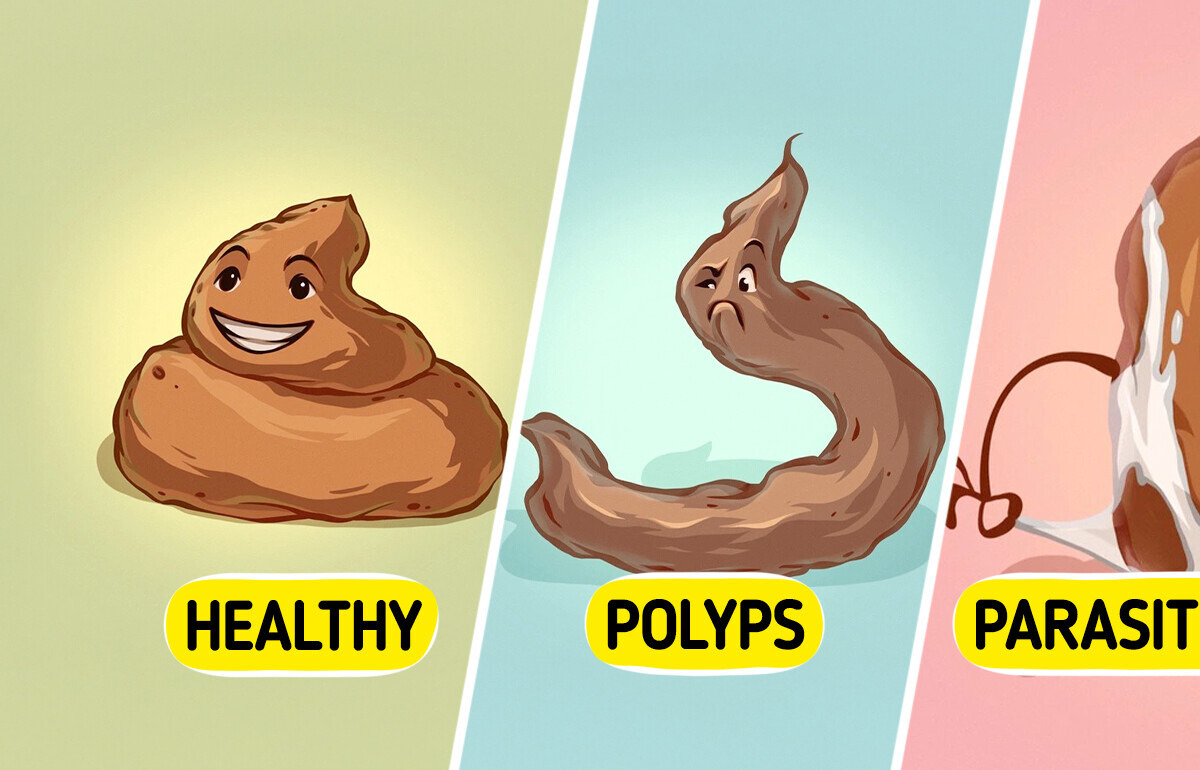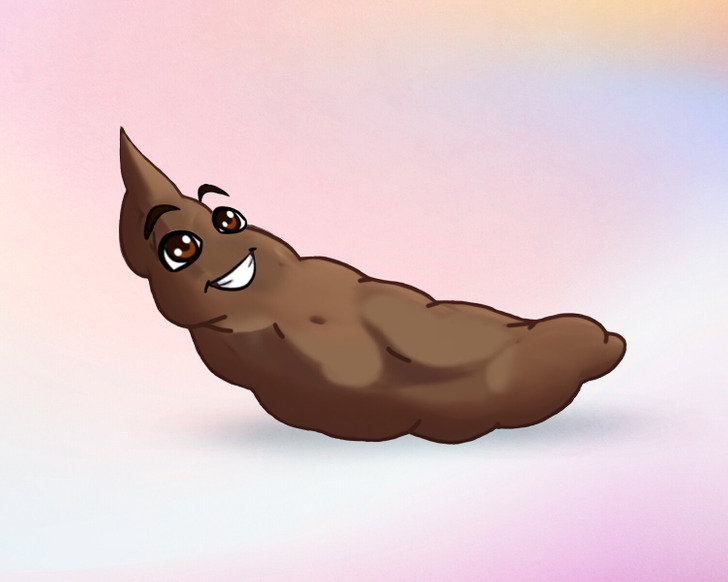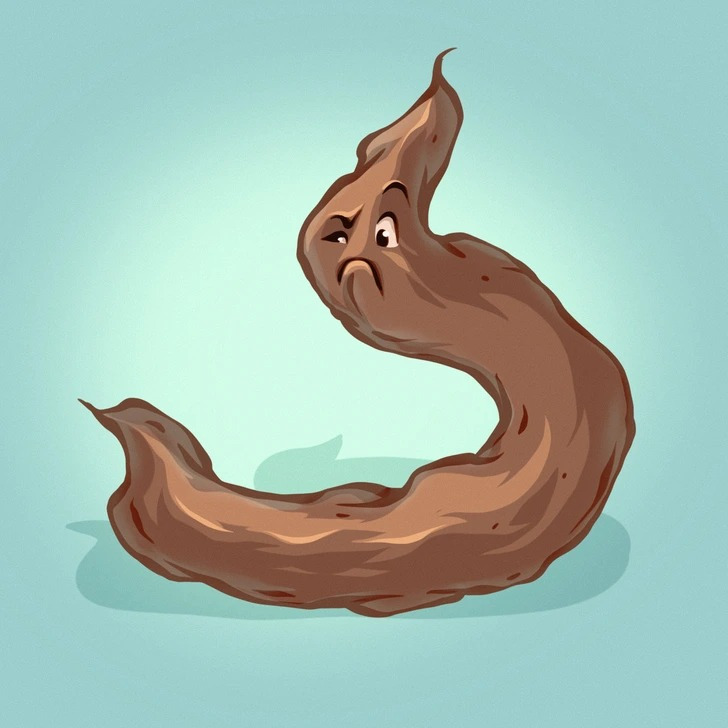These Pedicure Styles Are Dominating Summer 2025


Prioritizing good health starts with tuning in to the subtle signals our bodies send us every day. Among these signals, one of the most commonly overlooked—and often avoided—topics is stool. Though it may seem uncomfortable to discuss, stool offers valuable insights into our overall well-being. By learning to understand what it reveals about our health, we can take important steps toward better care and prevention. Today, we’ll explore why paying attention to this often-neglected indicator is so crucial.
CONTENT IS PROVIDED FOR INFORMATIONAL PURPOSES ONLY AND IS NOT INTENDED AS A SUBSTITUTE OF MEDICAL ADVICE. SEEK GUIDANCE OF YOUR DOCTOR REGARDING YOUR HEALTH AND MEDICAL CONDITIONS.

To understand what your stool indicates about your health, we should first recognize what a normal stool looks like. Healthy stool should be brown, well-formed, moist, and consistent, with a mild odor. This suggests that your digestive system is functioning properly and everything is in good shape!
Occasional floating stools are generally nothing to be overly concerned about, as they are often the result of a higher gas content in the stool. This can occur due to factors like the consumption of carbonated beverages, beans, or sugary foods. However, if your stools consistently float, it might indicate an issue with fat absorption in your body. It is advisable to consult a healthcare professional if you observe this as a recurring concern.
Stools that appear dark or black may be caused by eating certain foods, like beetroot, or by taking iron supplements. However, they can sometimes signal bleeding in the upper part of the digestive system.
If the black stools also have a strong, unpleasant smell, this could point to issues such as a peptic ulcer, gastritis, inflammation, or polyps in the colon. In these situations, it’s important to see a doctor. They might suggest diagnostic procedures like an endoscopy or colonoscopy to find the underlying cause. Detecting the problem early and getting appropriate treatment is key to protecting your health.
The brown color of stool comes from the presence of bilirubin and bile, which are important for digestion. Bilirubin forms in the liver when red blood cells break down, then combines with bile in the gallbladder before moving into the intestines. In the gut, bacteria further process it, and it’s eventually excreted in feces or urine.
While a high-fat diet is a frequent cause of yellow stools, various health conditions can also lead to this change. These include liver or gallbladder diseases, problems with the pancreas, celiac disease, Gilbert’s syndrome, giardiasis, stress, and poor eating habits. If yellow stools persist, it’s important to see a healthcare provider to determine the underlying cause.
Seeing a green tint in your stool? Don’t worry — it’s fairly common. According to Dr. Lee, stool color can change from day to day as digestion constantly shifts, and in most cases, this is nothing to be concerned about.
The most frequent cause is eating green vegetables like spinach, kale, or broccoli. Their chlorophyll content can naturally color your stool. Antibiotics can also affect gut bacteria, sometimes altering digestion and stool color. Certain medications may cause diarrhea with a greenish tone because some bile remains unabsorbed.
Occasionally, green stools can signal an infection. Bacterial, viral, or parasitic illnesses may speed up digestion, leaving bile unabsorbed and leading to watery or green-colored stools.
White or clay-colored stools can be a sign of a potentially serious health issue. This change happens when the liver doesn’t produce enough bile, or when bile is blocked from reaching the small intestine, disrupting normal digestion. Bile — made by the liver and stored in the gallbladder — is what normally gives stool its brown color.
Liver diseases like hepatitis and cirrhosis are common reasons for pale stools. Certain medications, such as antacids containing aluminum hydroxide, as well as barium used in some digestive tract X-ray procedures, can also cause this discoloration. If you notice white stools, it’s important to seek medical attention promptly to identify and address the cause.
Red-colored stool can be unsettling, but it’s not always a sign of something serious. Eating red-colored foods or consuming certain dyes, including those in some medications like Pepto-Bismol, can sometimes cause this change. However, red stools can also signal bleeding in the lower gastrointestinal tract, which may result from hemorrhoids, anal fissures, intestinal inflammation, or other sources of internal bleeding.
Bright red streaks on toilet paper or in the toilet, especially when accompanied by pain or itching, often point to hemorrhoids or anal fissures. Intestinal inflammation can also lead to similar changes.
If red stools are paired with symptoms like fever, general malaise, or blood that looks dark and grainy—similar to coffee grounds—it’s important to seek medical help immediately, as this may indicate more serious internal bleeding.

Sausage-shaped stools with cracks on the surface may indicate mild constipation, often caused by a low-fiber diet or extended periods of sitting. This stool form suggests that waste has remained in the bowel for about a week before being passed. Functional constipation is typically related to lifestyle and eating habits.
To support healthy bowel movements, aim to eat more fiber-rich foods, drink plenty of water, and stay physically active. If constipation continues or worsens, consult a healthcare professional to check for underlying issues and get the right treatment.
Watery, uncontrollable stools indicate a severe stage of diarrhea. This happens when irritation in the small intestine prevents proper fluid absorption. Although the large intestine may hold back some liquid, the excess quickly builds up in the rectum, resulting in sudden, intense episodes of diarrhea.

Stool that appears thin and ribbon-like can be a sign of narrowing within the intestinal tract. This narrowing may result from conditions such as irritable bowel syndrome, intestinal polyps or tumors, inflammatory bowel disease, chronic constipation, or spasms in the intestines.
If your stools are small, hard, and pellet-shaped, it may indicate constipation due to low fiber intake, dehydration, or lack of physical activity. Certain medications or health conditions can also cause this problem.
To relieve constipation, try eating more fiber, drinking plenty of fluids, and staying active. If the issue continues, consult a doctor to determine the underlying cause and get appropriate treatment.
If your stools are soft and contain fluffy pieces, it might be a sign of early diarrhea. This usually happens when the colon moves waste too quickly, often due to sudden changes in diet, stress, or variations in physical activity. During this period, bowel movements can feel urgent and harder to control.
Fast digestion can interfere with proper nutrient absorption, causing excess water to remain in the stool. Managing stress, slowly adjusting your diet, and keeping a healthy lifestyle can help return bowel function to normal. If diarrhea continues or gets worse, it’s important to see a healthcare professional to check for any underlying issues.

While a small amount of mucus in the stool is normal, having a large amount is not. This may signal stress, certain dietary factors, intestinal disorders, parasites or protozoa, bacterial or viral infections, swallowed foreign objects, or even tumors. Because the possible causes vary widely, it’s important to see a doctor to identify the underlying problem.
Here you can read about what an unpleasant breath odor might indicate.











